Last week we talked about outfit building blocks; this week, we are moving on to outfit formulas. What are outfit formulas? Think of them as templates rather than recipes – the individual elements are somewhat interchangeable. By keeping the overall architecture the same, but changing up the pieces, we can create different outfits quickly and with relatively little planning. What constitutes a successful outfit formula will depend on you. Your preferences – for specific types of clothing, for certain colours or patterns, for particular trends or aesthetics – inform how you like to get dressed. Some combinations will check off more boxes (or check them off in a more satisfying way) than others. I can’t give you an exhaustive list of outfit formulas and even if I could, it wouldn’t be worth much. You can’t know if an outfit formula works for you until you try it. A certain amount of “workshopping” is necessary. But here are some things to consider.
The Third Piece
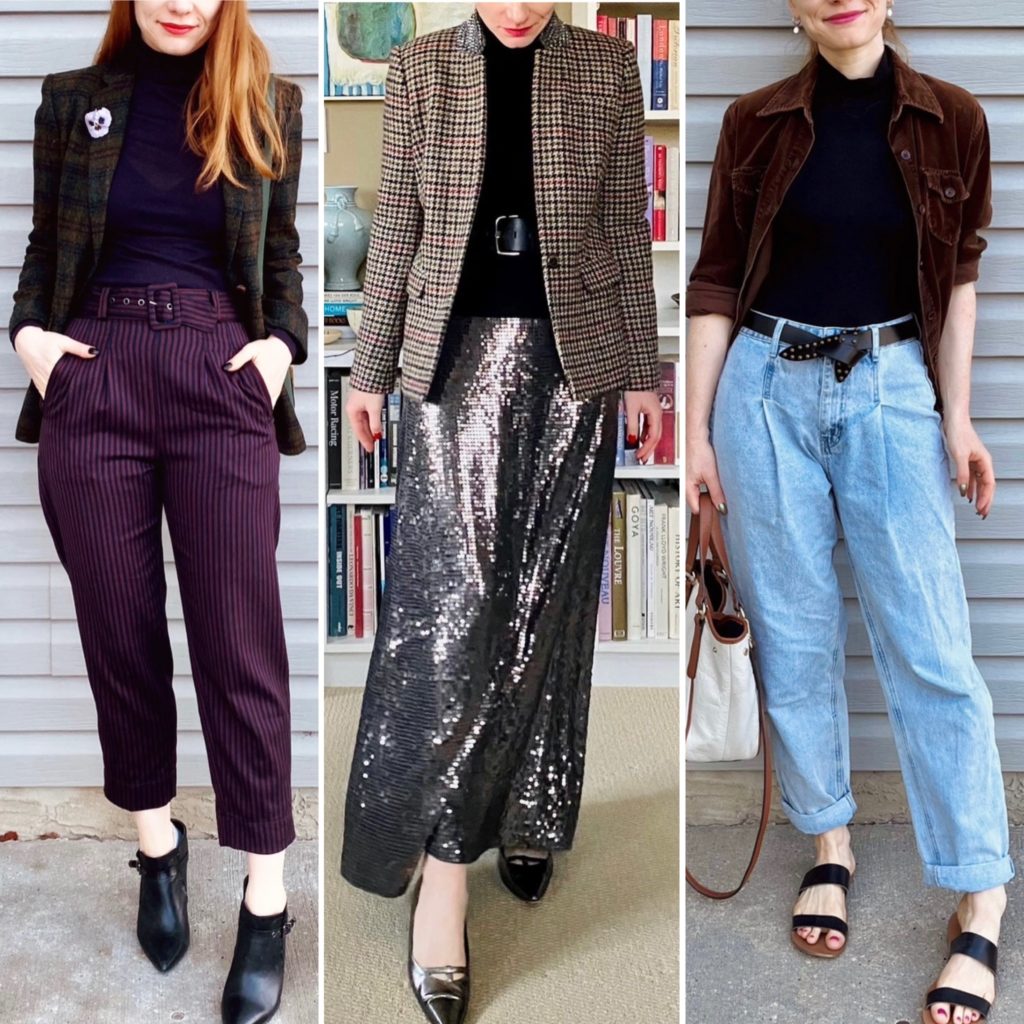
What makes clothes into an outfit? Often, it’s the third piece. That might be a coat, a blazer, a vest. Maybe a skirt over a pair of pants if the thought of revisiting the 00s intrigues you. Or a shirt layered over a tee, worn with jeans (shades of Papa Ralph). There are many different ways of incorporating a third piece into an outfit, and doing so adds a sense of intentionality to the overall look. If a third piece is not feasible – for weather-related reasons or otherwise – and you have to work with a two-piece outfit, consider either (i) making one of the pieces a statement, or (ii) adding a statement accessory.
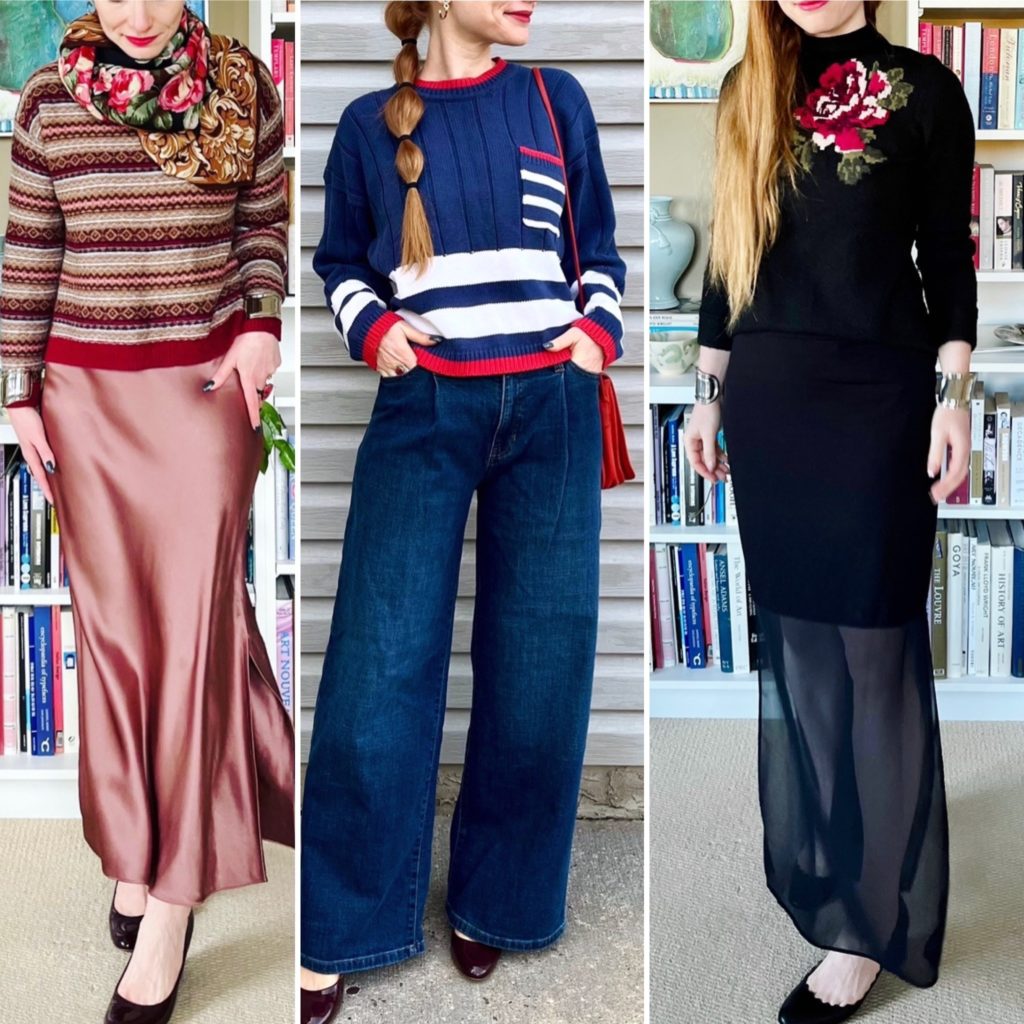
A statement (clothing) piece can be something in a bright colour, or a bold pattern, or a more unusual texture like leather or metallic fabric. These types of pieces can supply enough visual interest and “drama” to make up for the missing third piece. A statement accessory is something that stands out and draws attention; think an oversized or highly patterned scarf, a chunky necklace, or a colourful bag or shoes. Such accessories can basically take the place of a third piece.
Now, of course, you are never limited to only 3 pieces. The more components to an outfit, the more stylized it will appear. This can look impressive, but it can also appear “fussy” especially in a casual setting. I don’t believe that you should always dress for the lowest common denominator – I’m all about marching to the beat of one’s own drum – but I think it’s helpful to be aware of the impact that your fashion expression may have on others. With a 3-piece outfit, you’ll rarely run of risk of being underdressed or overdressed.
Depth, Texture, Contrast
When picking outfit building blocks to slot into your formula, think about the visual impact. Impact can be created through the use of colour and pattern, but that is only the start. Depth, texture, and contrast also create the impression of intentionality. Depth can be achieved through layers and the use of different shades of the same colour, for example. Texture can be achieved by pairing different types of fabrics and materials. Contrast can be achieved through colour and texture but also juxtaposition – think a men’s shirt paired with a full skirt, or a satin slip dress with combat boots. I aim to have at least one of these elements present in each outfit.
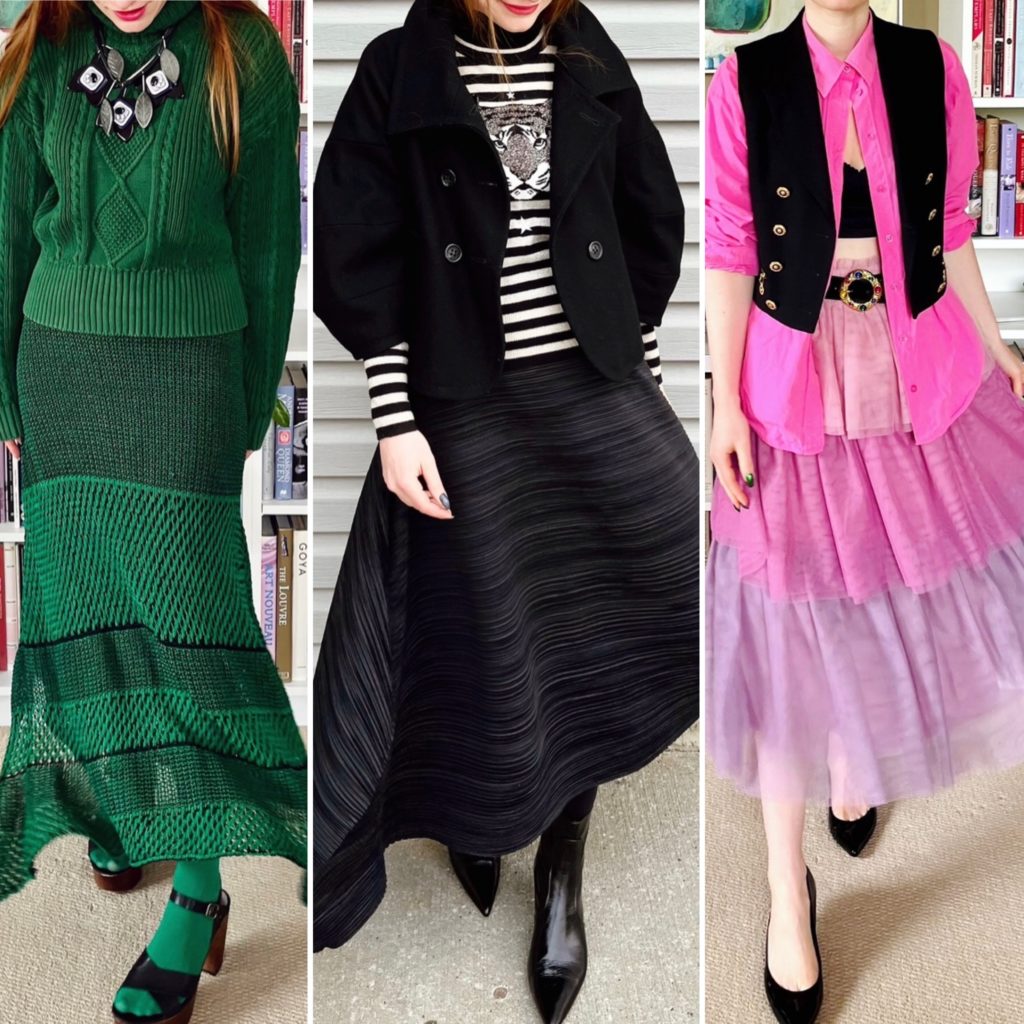
Under and Over
The strategic use of layers can transform an outfit. For example, one of my favourite styling “tricks” is to layer a longer skirt under a (full) shorter one to elongate the vertical line and/or create more volume on the bottom half of the outfit. This also maximizes the versatility of each individual item of clothing.
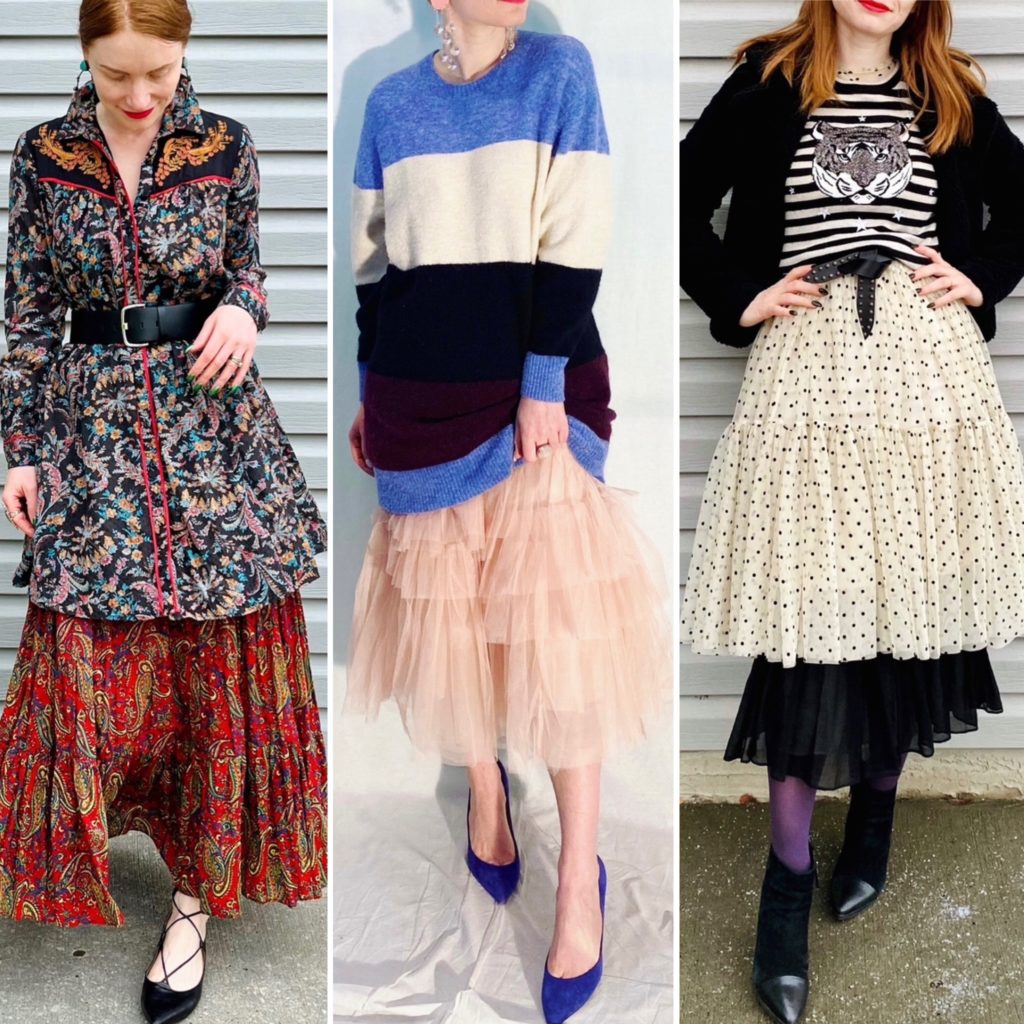
A similar “trick” is layering a dress or tunic over pants. This isn’t something that works for everyone — some people are still traumatized by the 00s version of this, and it tends to suit more niche aesthetics anyway. But something to consider.
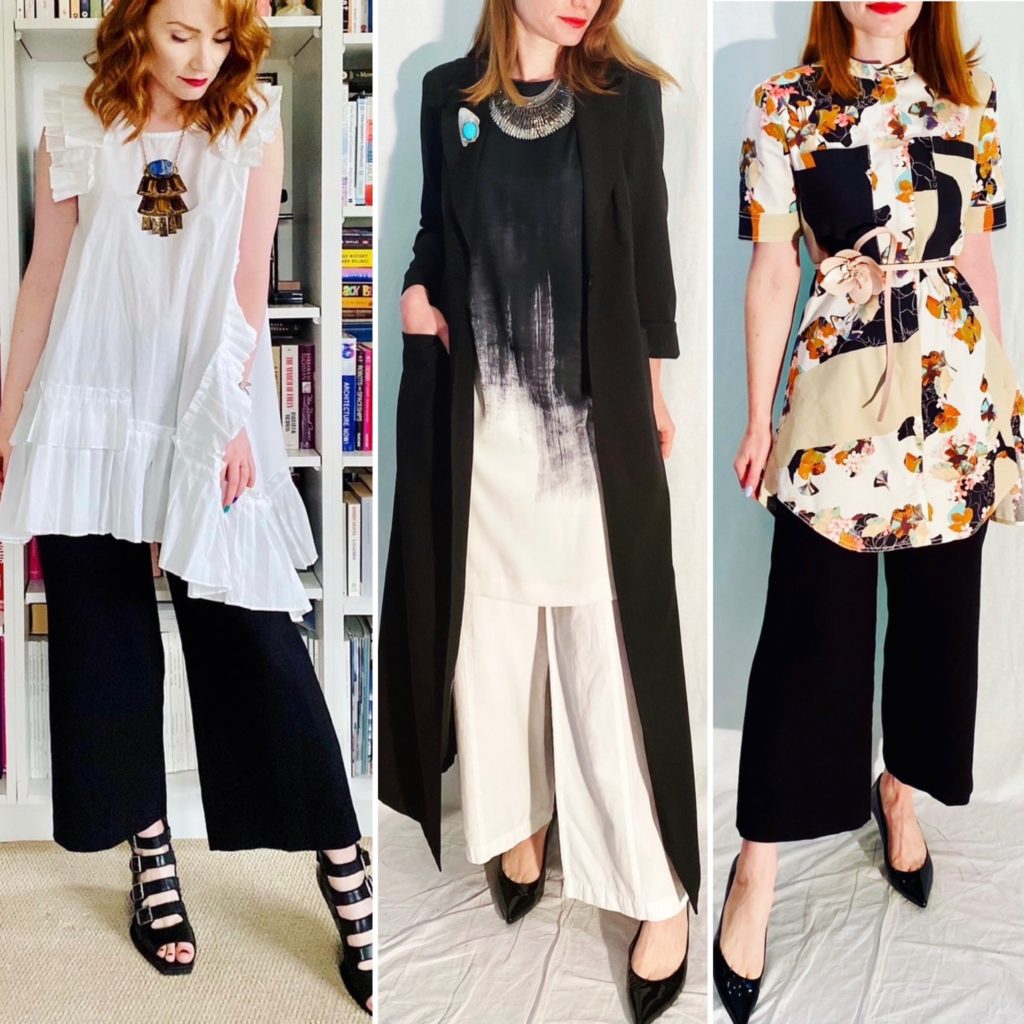
I also love adding lightweight base layers to transition summer pieces into the colder seasons. My favourite “tools” for this are a black turtleneck; a white tee; a mesh turtleneck; and a white collar dickie.

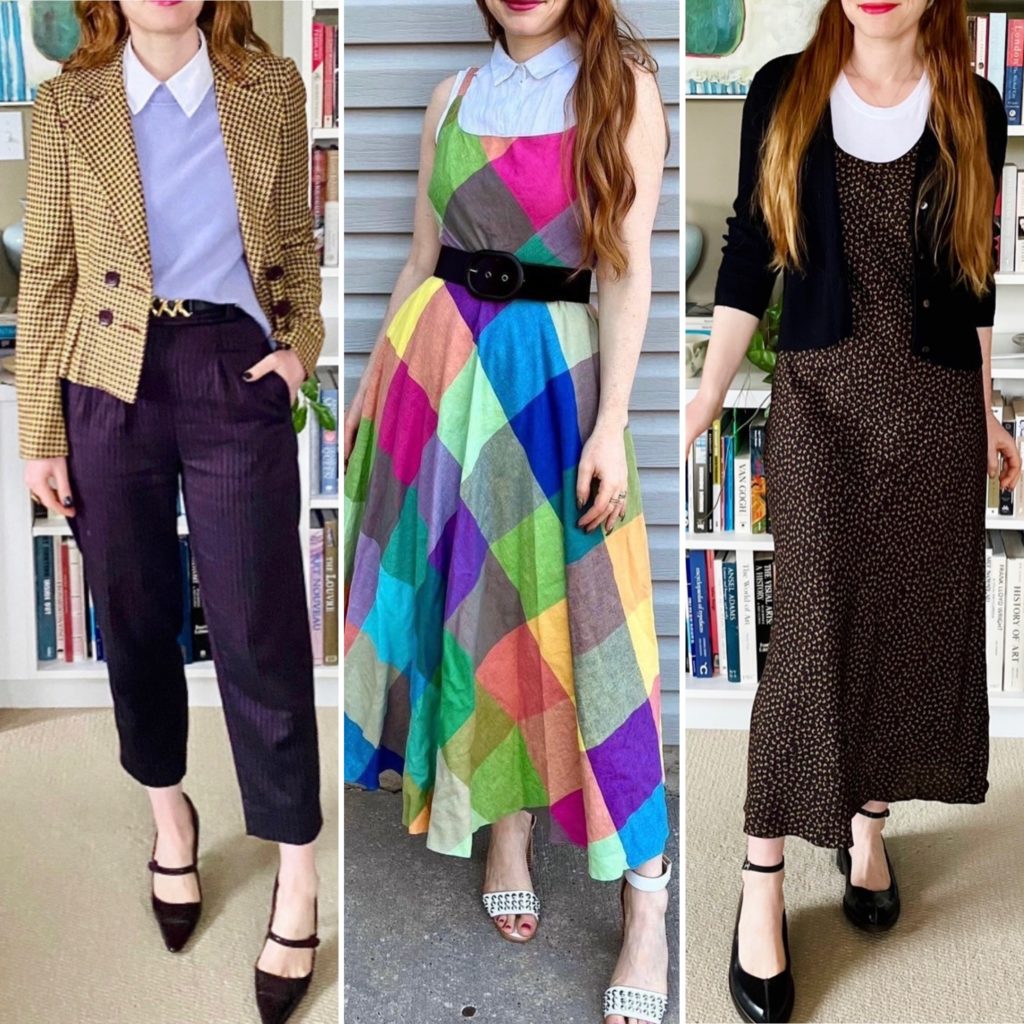
The key thing is that these pieces are lightweight and fitted, so they don’t add extra bulk; and cotton, if possible, so they are also breathable and soft against the skin.
I must also give an honourable mention to another favourite styling “hack” which is layering a shirt or sweater over a dress to create the illusion of separates. Cropped tops are best for this, but you can also use a belt to create the same effect with a faux tuck. A wide belt is required for this, but keep in mind that you only need to tuck an inch or so of your top and then simply fold over the extra material.
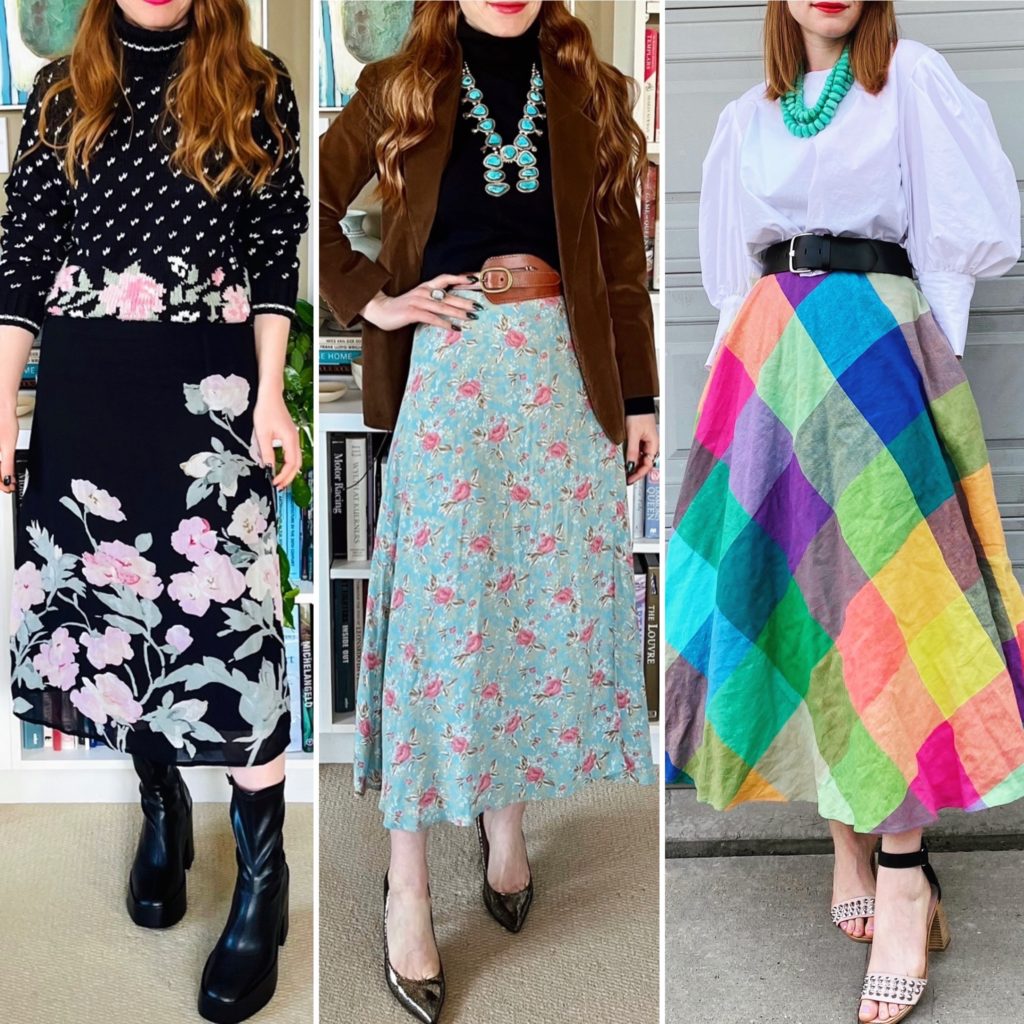
Old Favourites
I said I wouldn’t be able to give you an exhaustive list of outfit formulas, but it seems unfair to not at least share some of my favourites.
Shirt + vest + blazer + pants
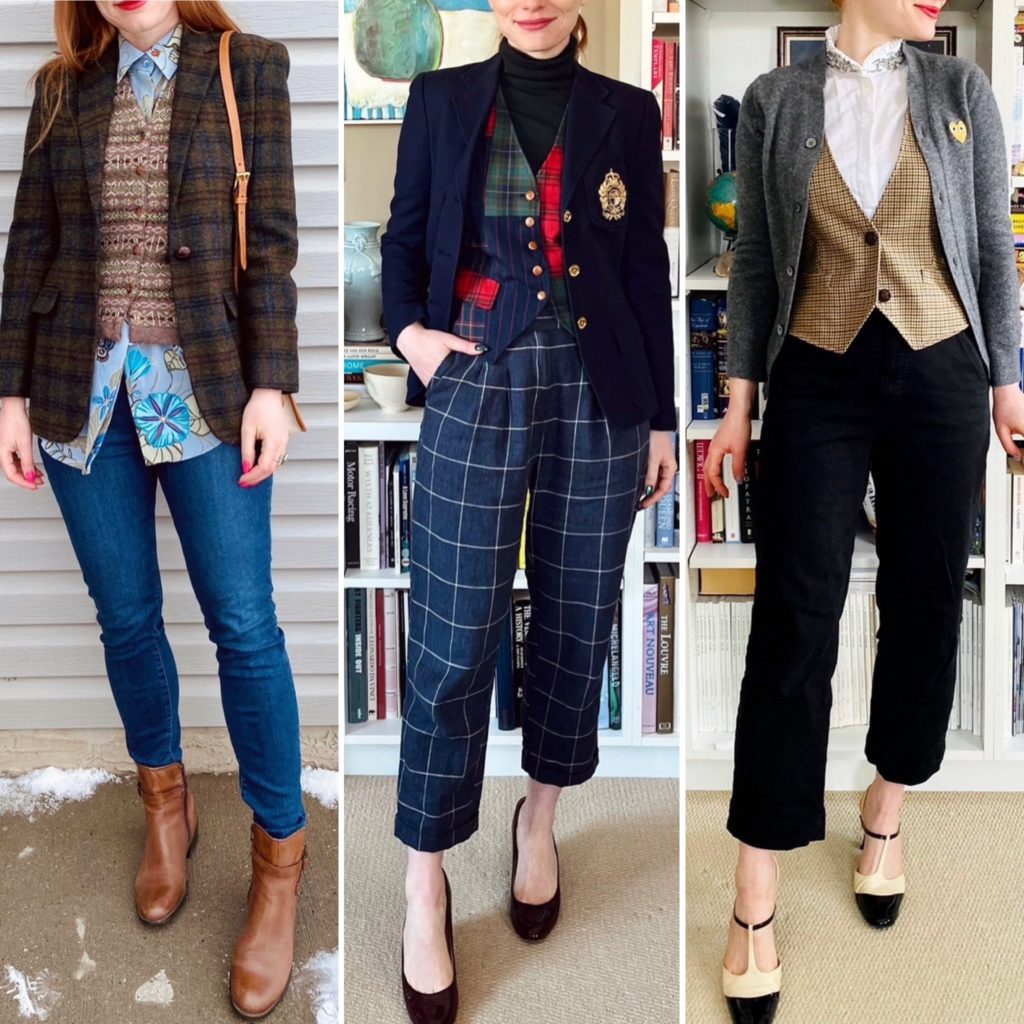
Long skirt + top + topper

Short skirt + top + long topper

Sweater + pants + statement coat
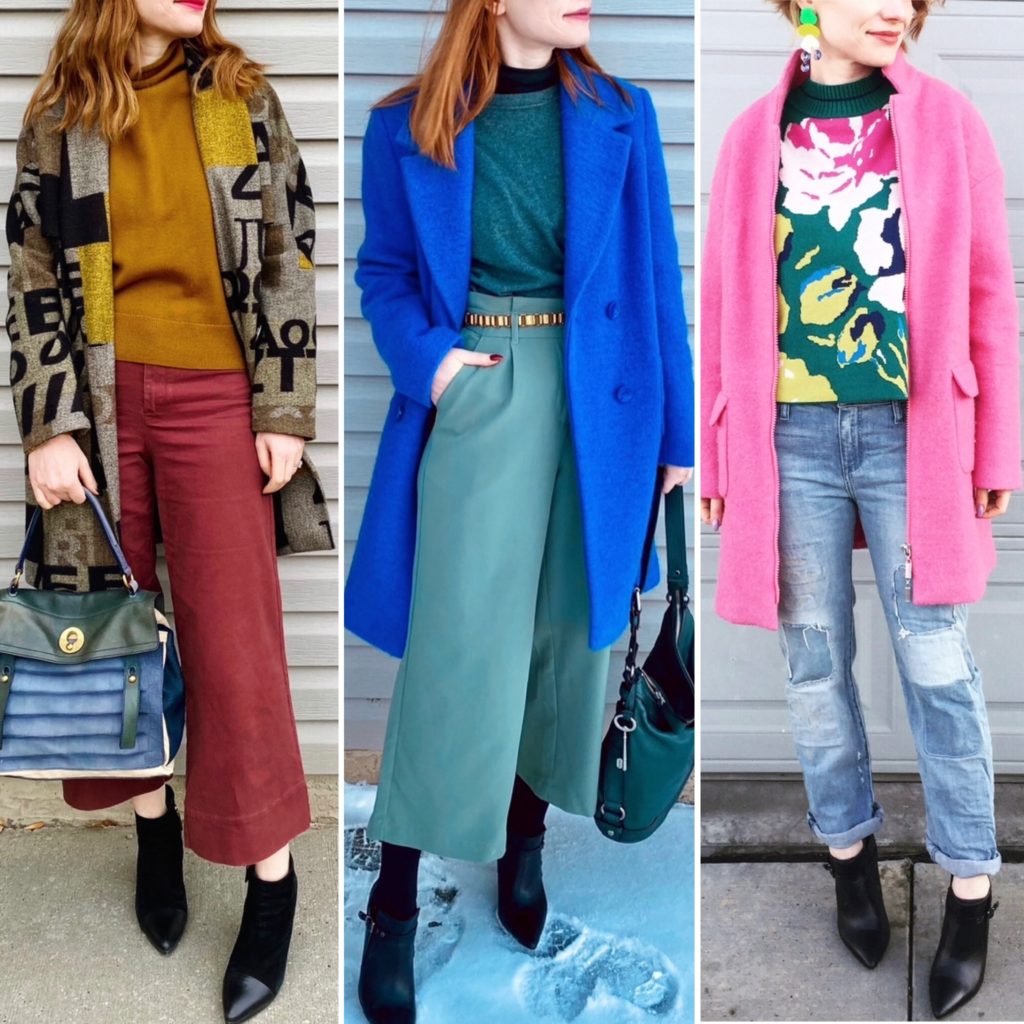
Crop top + high waist bottom + topper

Dress + vest

The last formula is a good example of how I “style up” a 2-piece outfit so that it looks intentional. A belt or large necklace are my usual go-tos.
I hope these examples give you some ideas to explore in your own outfit-building, but remember the most important consideration of all: have fun!

Preamble: I adore these posts and find them very helpful in considering my clothing choices. Also, your hair is glorious!
I must be a gardener through and through, because my formula is the same as the most commonly used “recipe” for hanging baskets. Thriller (statement piece), spiller (something with interesting lines, movement or texture) and filler (boring basics that ground everything). Not fancy, not complicated, but it works for me!
I had never heard of that and I love it! Will have to remember it and try to use it. Thanks for sharing!!
Thanks for these and I also really enjoy these posts!